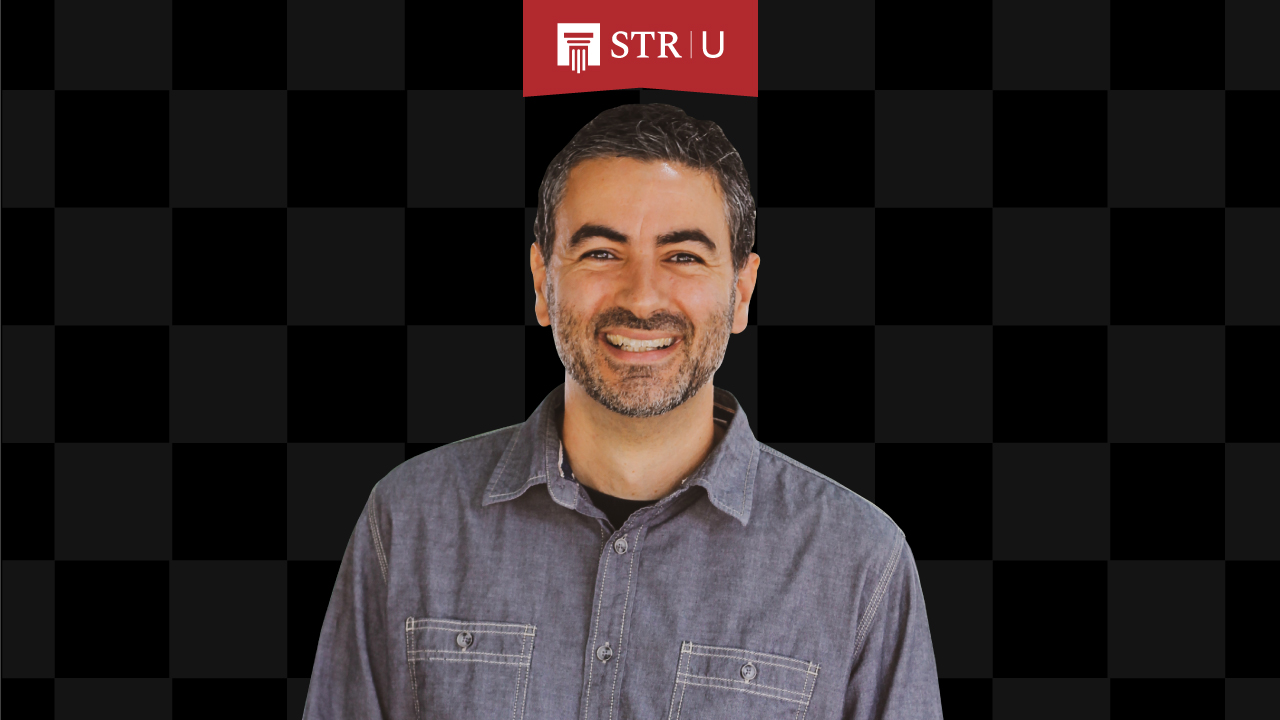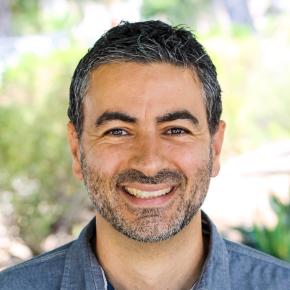The next time someone tells you the unborn aren’t human persons, try this tactic from our new Stand to Reason University course, Making Abortion Unthinkable.
Transcript
In 2010, I debated a professor of women’s studies at California State University, San Marcos over the question “Should abortion be illegal?” I presented a scientific defense for the full humanity of the unborn, from the moment of conception. During the debate, my interlocutor conceded my scientific argument but still proceeded to argue that abortion should remain legal. That’s a common view amongst abortion-choice advocates and one that I would like to explain and respond to now. In order to explain it, I need to first explain the logic of the pro-life view.
Our view entails two premises. Premise one is it’s wrong to kill innocent human beings. Premise two is abortion kills an innocent human being. And the conclusion is, therefore, abortion is wrong. This is what we call logic, a valid deductive argument. What that means is if you can show that premise one and premise two are true, then the conclusion logically follows by necessity, meaning it has to be true.
Now, which premise do you think is more controversial and less likely to be accepted? If you guessed premise two, you’re right. Most people you come across will grant you premise one without needing to be persuaded. If they don’t think it’s wrong to kill innocent human beings, they probably don’t need an argument. Chances are, they need a jail cell. It’s premise two—that abortion kills an innocent human being—that they need to be convinced of.
Remember, according to the science of embryology, the unborn is a human being from the moment of conception, and since abortion kills that unborn human being, premise two must also be true. That means both premises are true, and therefore, the conclusion largely follows: Abortion is wrong.
Here’s how some abortion-choice advocates sidestep the logic of our view. They change the syllogism. They say about premise one that it’s not wrong to kill innocent human beings, but that it’s wrong to kill innocent human persons. With premise two, they claim that abortion kills an innocent human being but not a person. Therefore, they conclude, abortion is not wrong. Notice what they are saying. The unborn might be a human being, but it’s not a human person. What question naturally pops into your mind when you hear this claim? What’s the difference? What’s the difference between a human being and a human person? And, by the way, they must have an answer to this question, because they’ve just made this incredible claim that there exists a group of human beings out there in the world that we can kill with impunity simply because they are not persons. Really? Well, who are these human beings that are not persons? What difference between an unborn human being and a born human person justifies killing the former while protecting the latter?
Abortion-choice advocates typically cite a variety of characteristics they believe make a human being a person. All of these characteristics fall under one of four categories: size or physical appearance, level of development, environment, or degree of dependency. You can remember them with the acronym SLED, and that’s why we call this tactic the SLED Test. Here’s how it works. Although it’s true that the unborn is different than a born human being in those four ways, none of them is a relevant difference. In other words, none of them justifies killing the unborn. Why? Because born people are also different in those same four categories, and since we don’t disqualify born humans for these differences, we shouldn’t disqualify unborn human beings either.
Let’s consider each category. The first letter in the SLED acronym is S, which stands for “size or physical appearance.” The unborn is clearly smaller than a born human being, but why does being smaller than someone else disqualify you from being a valuable person? It doesn’t. Men are generally larger than women. Does that mean women are less valuable than men? Of course not. Four-year-olds are smaller than 14-year-olds. Does that mean a four-year-old is less valuable than a 14-year-old? Of course not. Well, a four-month-old fetus is just a human being who is smaller than a four-year-old. Why should they be disqualified just because they’re smaller when the four-year-old isn’t? It doesn’t make sense. Size is irrelevant to someone’s status as a person.
The second letter in SLED is L, which stands for “level of development.” Now, it’s certainly true that the unborn is less developed than a born human being, but why does being less developed than someone else make you less valuable or disqualify you from being a person? A four-year-old girl is less developed than a 14-year-old girl. The four-year-old doesn’t even have a fully developed reproductive system to have the capacity to get pregnant. Is a four-year-old, then, less valuable because of that? Can we disqualify them from being classified as a person for that reason? Well, of course not. Then we shouldn’t disqualify the unborn for also being less developed than a four-year-old.
The third letter in SLED is E, which stands for “environment.” It’s certainly true that the unborn is in a different environment and location than a born person, but where one is has no bearing on who one is. When an astronaut floats in outer space with a spacesuit or a diver swims underwater with scuba gear, they are both in a different environment—indeed, environments where they are not viable without assistance—but do we disqualify them from being a valuable person simply because of their location? Of course not. Then how can a six-inch journey through the birth canal magically transform a non-valuable human being into a valuable person? It can’t, because nothing has changed about the human except for their location. If you’re a valuable person in one location, then that same being is a valuable person in a different location.
The final letter in SLED is D, which stands for “degree of dependency.“ You see, it’s certainly true that the unborn is dependent on the mother’s body for survival, but why does being dependent upon someone else all of a sudden disqualify you from being a valuable person? Conjoined twins depend on each other’s bodies for survival, but we don’t disqualify them from being valuable persons. Some elderly people depend on their adult children to care for them, but we don’t disqualify the elderly from being valuable persons. Or imagine you’re the last person to leave a pool party but glance back and notice a toddler has fallen into the deep end of the pool. Their life is now entirely dependent upon you for their survival. Can you ignore their cries for help because they are dependent upon you for their survival? Well, of course not, right? In the same way, an unborn baby is dependent on the mother for survival, and that shouldn’t disqualify them from being a valuable person either. In fact, babies of all ages depend on their mothers for feeding—by breast, bottle, or through the blood of an umbilical cord. You see, if dependence disqualifies you, then the weak and vulnerable will always be in jeopardy.
Notice that we acknowledge that the unborn differs from a born human person in the four SLED categories, but none of these differences justifies disqualifying them from being a valuable human person. After all, born humans differ in exactly the same ways, and yet we don’t disqualify them. Instead, the SLED test exposes abortion for what it truly is: unjust discrimination. Notice that abortion-choice advocates hold a view that denies some human beings equal value and equal protection, and sadly, history is crowded with examples where a class of human beings is disqualified from being valuable based on an arbitrary characteristic. For example, African Americans were victims of discrimination. Notice, they were a class of human beings that was disqualified from being valuable based on an arbitrary characteristic. What characteristic? Their skin color. Why? So they could be sold into slavery and forced labor. Jews during the Holocaust were also victims of discrimination. Notice, too, they were a class of human beings that was disqualified from being valuable based on an arbitrary characteristic. What characteristic? Their ethnicity. Why? So they could be experimented on and exterminated.
Today, the unborn are victims of discrimination in exactly the same way. Notice, they, too, are a class of human beings but are being disqualified from being valuable based on an arbitrary characteristic. What characteristic? They’re too small. They’re not developed enough. They’re in the wrong location. Or they’re too dependent upon their mothers for survival. We live in an upside-down world. Abortion-choice advocates claim to champion inclusion, but yet they exclude a certain class of human beings. They claim to champion the oppressed, but they oppress the weak. They claim to disdain discrimination, but they unjustly discriminate. By contrast, pro-life advocates are inclusive, champion the weak, and don’t discriminate against those who are small, vulnerable, and defenseless.

